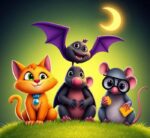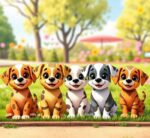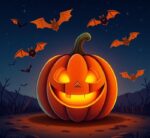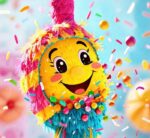- You are here:
- Home »
- words
- » Halloween Words That Start With G [LIST]
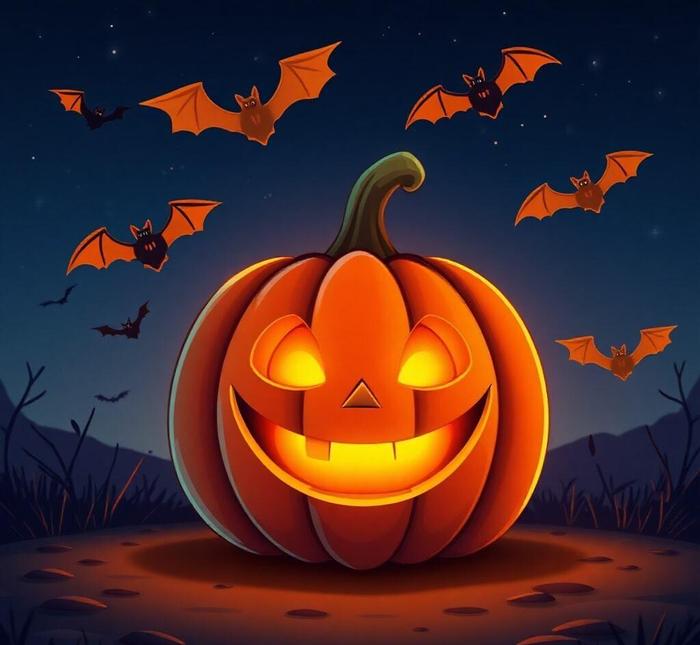
Halloween Words That Start With G [LIST]
Halloween is a time for fun, frights, and spooky surprises, and part of the magic of the season comes from the language we use. From costumes to decorations, food to activities, Halloween-themed vocabulary adds to the eerie atmosphere of the holiday. One interesting way to explore Halloween-related words is by focusing on those that start with the letter “G”. These words evoke imagery of ghosts, ghouls, and grim tales, all of which are central to the Halloween spirit. Whether you’re planning a spooky party or simply enjoying the season’s festivities, knowing some ‘G’ words can add a bit of extra flair to your Halloween lexicon.
In this article, we’ll explore a variety of Halloween-related words that start with the letter “G”, each offering its own unique contribution to the world of the spooky and supernatural. From iconic monsters like ghouls to ghostly phenomena and grim traditions, this list is packed with terms that help capture the eerie vibe of October 31st. So, if you’re looking to expand your Halloween vocabulary or simply want to impress your friends with some spooky terminology, read on for a collection of ghoulish words that will elevate your Halloween experience.
Halloween Words That Start With G
1. Ghoul
A ghoul is a mythical monster or evil spirit associated with graveyards and consuming human flesh. In Halloween lore, ghouls are often depicted as undead or demonic creatures that haunt dark places.
Examples
- The ghoul emerged from the shadows, its glowing eyes scanning the graveyard.
- Children shrieked in terror as the ghoul slowly moved toward them, its hands reaching out.
- A ghoul in a dark cloak lurked near the haunted house, waiting for unsuspecting victims.
2. Ghost
A ghost is the spirit or soul of a deceased person, typically believed to haunt the living world. In Halloween tradition, ghosts are often portrayed as ethereal, translucent figures that move through walls and are often associated with spooky phenomena.
Examples
- The ghost of the old mansion is said to appear at midnight, floating through the halls.
- She felt the chill in the air as the ghost of her grandmother whispered in the darkness.
- The children played in the haunted house, pretending to be ghosts as they crept through the rooms.
3. Graveyard
A graveyard is a burial ground, usually located outside of towns or cities, where the dead are laid to rest. It is commonly associated with spooky or haunted settings in Halloween lore, often filled with old tombstones and mausoleums.
Examples
- The graveyard was silent, save for the rustling of leaves on the ground.
- As they walked through the graveyard, the eerie glow of the moon illuminated the tombstones.
- They heard a distant howl as they approached the forgotten graveyard, its gates creaking in the wind.
4. Gore
Gore refers to the blood, guts, and other graphic, often violent, depictions of injury or death. During Halloween, gore is commonly used in horror-themed decorations and films to shock and disgust audiences.
Examples
- The movie was filled with excessive gore, depicting gruesome scenes of horror.
- The haunted house had rooms covered in fake gore to terrify its visitors.
- Blood and gore spilled out of the fake severed body in the corner of the room.
5. Grim
Grim refers to something dark, foreboding, or serious. In Halloween folklore, the term is often used to describe figures like the Grim Reaper, an ominous personification of death.
Examples
- The grim figure in the cloak stood silently, holding a scythe in its skeletal hand.
- A grim sense of dread settled over the room as the lights flickered.
- The grim reaper’s appearance signaled the end for all who crossed its path.
6. Goblin
A goblin is a mischievous or grotesque creature from folklore, often depicted as small and impish. Goblins are commonly featured in Halloween stories, where they cause trouble or play tricks on humans.
Examples
- The goblin cackled as it hopped from rock to rock, its eyes glowing in the dark.
- A mischievous goblin pulled pranks on the villagers every Halloween night.
- The children were frightened when they saw the goblin’s sharp teeth in the dim light.
7. Grave
A grave is a burial site where the deceased are laid to rest. It is a central element in Halloween themes, often associated with ghosts, spirits, and eerie happenings in cemeteries.
Examples
- The grave was covered with fresh dirt, and the eerie silence was broken only by the wind.
- The detective knelt beside the grave, examining the markings on the stone.
- They stumbled upon a forgotten grave hidden beneath a tangle of vines and moss.
8. Gory
Gory refers to excessive bloodshed, violence, or graphic images of injury, often in horror films or Halloween decorations. It is used to describe scenes that are intentionally shocking or unsettling.
Examples
- The haunted house was known for its gory decorations and lifelike blood effects.
- The gory details in the horror movie made it too frightening to watch for some.
- His costume was covered in gory makeup, simulating wounds and blood all over his body.
9. Gravekeeper
A gravekeeper is a person who tends to a graveyard or cemetery, ensuring that the graves are properly maintained. In Halloween stories, gravekeepers are often portrayed as mysterious figures, linked to secrets or supernatural events.
Examples
- The gravekeeper was an old man who spent his days tending to the cemetery’s neglected tombstones.
- As the moon rose, the gravekeeper walked the grounds, making sure all the gates were locked.
- The gravekeeper noticed the strange markings on the newest grave, which seemed out of place.
10. Gothic
Gothic refers to a style of architecture, literature, or art characterized by dark, mysterious, and supernatural elements. Gothic themes are commonly associated with Halloween, evoking feelings of fear, mystery, and the macabre.
Examples
- The Gothic mansion stood on the hill, its towering spires dark against the stormy sky.
- She loved the gothic style of architecture, with its pointed arches and dark, brooding atmosphere.
- The gothic theme of the party included cobwebs, candles, and an eerie ambiance.
11. Grimace
A grimace is a twisted facial expression, often showing pain, fear, or disgust. During Halloween, it’s often used to describe the expressions of monsters, ghosts, or people in terrifying situations.
Examples
- The grimace on his face showed the intense fear he felt as the ghostly figure approached.
- A grimace of pain crossed her face as she looked at the haunted house’s terrifying decorations.
- The villain’s grimace became more sinister as he revealed his dark intentions.
12. Gremlin
Gremlins are small, impish creatures often associated with causing havoc and mischief. In Halloween stories, they are typically portrayed as mischievous, troublesome beings that like to create disorder.
Examples
- The gremlins caused chaos in the workshop, breaking machines and making strange noises.
- Legend had it that gremlins would sneak into homes on Halloween night, causing mischief.
- A small gremlin scurried under the table, its eyes glowing in the dark.
13. Glimpse
A glimpse is a brief, fleeting view of something. In Halloween tales, glimpses are often used to create suspense, where characters see something terrifying but cannot fully comprehend what it is.
Examples
- She caught a brief glimpse of a shadowy figure moving in the corner of her eye.
- The glimpse of the ghostly figure through the fog left him frozen in terror.
- As they passed the haunted house, they had a glimpse of something moving behind the window.
14. Gallows
The gallows is a structure used for executions by hanging. In Halloween settings, gallows are often used to evoke a sense of dread, associated with death and punishment.
Examples
- The gallows stood in the center of the town square, a grim reminder of past executions.
- As the wind howled, the ropes on the gallows creaked in the moonlight.
- The haunted house featured a dark corner with a mock gallows, adding to the chilling atmosphere.
15. Gravecloth
A gravecloth is a piece of cloth, often dark or tattered, used to cover a body in a grave. It’s commonly used in Halloween depictions of the dead, symbolizing the funeral process or ghostly apparitions.
Examples
- The gravecloth was draped over the coffin, symbolizing the transition into the afterlife.
- The ghostly figure was draped in a tattered gravecloth, its face obscured by shadows.
- A black gravecloth covered the body, its edges fluttering in the cold night air.
16. Grim Reaper
The Grim Reaper is a personification of death, often depicted as a skeletal figure in a dark robe, carrying a scythe. He is commonly featured in Halloween themes, symbolizing the inevitability of death.
Examples
- The Grim Reaper entered the room, his skeletal hand raised in a silent warning.
- The legend of the Grim Reaper says he comes for the souls of the departed.
- The Grim Reaper is a symbol of death, often portrayed with a scythe and a dark, hooded cloak.
17. Goth
Goth is a subculture known for its dark, mysterious aesthetic, often incorporating themes of death, the supernatural, and horror. It is a popular style for Halloween costumes, with individuals dressing in black, wearing dramatic makeup, and embracing spooky themes.
Examples
- The goth teens painted their faces white and wore dark clothing to the Halloween party.
- She attended the goth Halloween gathering, where everyone dressed in black and wore eerie makeup.
- The goth culture embraces dark themes, which make it a popular style for Halloween costumes.
18. Grave-digger
A grave-digger is a person responsible for digging graves in a cemetery. In Halloween settings, grave-diggers are often portrayed as eerie, solitary figures, sometimes involved in supernatural happenings.
Examples
- The grave-digger worked tirelessly, digging deep into the cold earth to prepare new burial sites.
- At night, the grave-digger’s lantern could be seen moving across the cemetery as he worked alone.
- The role of a grave-digger is often depicted in Halloween stories as a figure tied to the mysteries of the dead.
19. Ghastly
Ghastly refers to something horrifying or terrifying, often involving ghosts or supernatural events. It’s frequently used in Halloween contexts to describe a particularly frightening appearance or occurrence.
Examples
- The ghastly figure moved closer, its glowing eyes locked onto their terrified faces.
- A ghastly scream echoed through the night, sending chills down their spines.
- They found a ghastly scene in the abandoned house, with furniture overturned and eerie symbols drawn on the walls.
20. Grimacing
Grimacing is a facial expression that shows discomfort, pain, or disgust. It is often used to describe the reactions of characters in Halloween horror scenarios, especially when encountering something unpleasant or terrifying.
Examples
- The character was grimacing as they stumbled through the haunted maze, trying to escape.
- The zombie kept grimacing, its rotting face twisted in pain and hunger.
- He was grimacing from the terrible smell of the haunted graveyard, the air thick with decay.
21. Gasp
A gasp is a sudden intake of breath, often due to surprise, fear, or shock. It is a common reaction in Halloween stories, used to emphasize a sudden or terrifying event.
Examples
- She gasped in horror as the ghostly figure appeared before her.
- The children gasped as the witch cackled, summoning a cloud of smoke.
- He gasped when the door creaked open and revealed the dark, cobweb-filled room.
22. Goblet
A goblet is a large, ornamental cup often used for drinking, particularly in ceremonial settings. In Halloween themes, it is frequently associated with witches, vampires, and other supernatural beings, often containing potions or blood.
Examples
- The vampire raised his goblet, filled with blood, as he welcomed the guests into his lair.
- The witches gathered around the cauldron, each holding a goblet filled with a mysterious brew.
- The goblet sparkled in the candlelight, adorned with intricate symbols and mysterious runes.
23. Graveyard Shift
The graveyard shift is a term used for the late-night work shift, typically between midnight and dawn. In Halloween contexts, it is often used to create a spooky atmosphere, associated with night and the supernatural.
Examples
- He worked the graveyard shift at the haunted house, ensuring the guests stayed scared all night.
- The graveyard shift was particularly eerie, with only the sound of the wind and the occasional howl of a wolf.
- She volunteered for the graveyard shift at the cemetery, hoping to encounter something supernatural.
Historical Context

Halloween is an ancient celebration that has evolved over centuries, blending pagan traditions, Christian customs, and folk beliefs into the modern festivities we recognize today. The word "Halloween" itself derives from the Christian festival of All Hallows’ Eve, which marked the night before All Saints’ Day on November 1st. But Halloween’s roots go deeper, extending to the Celtic festival of Samhain, a time when people believed the veil between the worlds of the living and the dead grew thin. This period of heightened spiritual activity inspired many words and symbols that still play a major role in Halloween today.
Words related to Halloween that start with the letter "G" evoke a sense of mystery, danger, and folklore, reflecting the themes of death, the supernatural, and the macabre. "Ghost," for example, has deep historical ties to belief in spirits and the afterlife, which are fundamental aspects of Halloween’s dark origins. Similarly, words like "grave" and "goblins" are tied to the imagery of death, burial, and the otherworldly creatures that were believed to emerge during Samhain and other autumnal celebrations.
The presence of these words in Halloween traditions is a direct result of how the holiday has incorporated ancient ideas of spirits, hauntings, and the mysterious forces of the night. Over time, these elements were woven into the folklore of Halloween, which became a rich tapestry of myth, superstition, and fun. The connection between "G" words and Halloween reveals a historical fusion of the sacred and the eerie, creating a celebration that honors both the dead and the unexplained.
Word Origins And Etymology
Exploring Halloween words that start with the letter "G" invites us to delve into their etymologies, shedding light on their fascinating evolution and how they’ve come to represent the eerie and supernatural. Many of these words have their origins in Old English, Latin, or Celtic languages, shaped over centuries to reflect our collective fears, imaginations, and cultural practices surrounding death and the afterlife.
-
Ghost: The word "ghost" has its roots in the Old English word gāst, which means "spirit" or "soul." This term is related to the Proto-Germanic gaistaz, which referred to a spirit, whether of the living or the dead. The belief in ghosts, or the souls of the deceased returning to the mortal world, was widespread across Europe and is still an integral part of Halloween lore. Over time, the word "ghost" evolved in English to refer specifically to the spirit of someone who had passed away, often with the suggestion of it haunting the living.
-
Grave: Derived from the Old English word græf, meaning "a burial place" or "tomb," the term "grave" is tied to the idea of death, burial rituals, and the fear of what might lurk beneath the earth. As Halloween draws on themes of mortality and the afterlife, the grave has become a symbol of the unknown, a place where spirits might rest or rise from the dead.
-
Goblins: The origin of "goblin" can be traced back to the Old French gobelin, which was likely borrowed from the Middle Latin gobelinus. Goblins were originally mischievous and sometimes malevolent spirits or creatures in folklore, often depicted as small, ugly, and wicked. The word “goblin” was used to describe various supernatural beings in medieval Europe, especially during the time of Samhain, which is reflected in the Halloween customs that still include these creatures as mischievous or scary figures.
-
Gore: The word "gore" is derived from the Old English gor, which means "mud" or "filth," though it eventually took on a more grisly connotation. Over time, its meaning shifted to denote blood, often associated with violent injury or death. The term "gore" today is often used in horror films and Halloween imagery to describe the graphic depiction of blood or violent events that form part of the holiday’s more gruesome celebrations.
These words reflect the intertwined history of language, culture, and superstition. They show how the fearful and mysterious aspects of life and death have been linguistically captured and passed down through generations, influencing how we celebrate Halloween today.
Common Misconceptions
Halloween is a holiday rich with history and tradition, but over time, various misunderstandings and myths have arisen, particularly around words and symbols associated with the holiday. Some Halloween words that start with the letter "G" have been subject to common misconceptions, often becoming distorted or misunderstood as they were passed down through popular culture.
-
Ghosts Are Only the Spirits of the Dead: One of the most widespread misconceptions is that "ghosts" are always the spirits of people who have passed away. While this is certainly the most common interpretation, the word "ghost" historically had a broader meaning, often referring to any kind of spirit or supernatural entity, not just those of deceased humans. Some ancient cultures believed in ghosts that were never human—entities tied to places, natural elements, or even to certain objects. So, while Halloween ghosts are typically human spirits, the original concept was far more varied.
-
Goblins Are Evil: In modern Halloween traditions, goblins are often depicted as malevolent creatures, but their folkloric roots are more complicated. The word "goblin" has often been used to describe mischievous but not necessarily evil beings, capable of either helping or hindering humans depending on the myth or legend. The image of the goblin as a purely evil entity, common in Halloween stories, is a modern embellishment rather than a strict interpretation of the word’s historical meaning.
-
Graveyards Are Always Places of Horror: While the word "grave" or "graveyard" can certainly evoke eerie images, historically, graveyards were often seen as sacred places where the deceased were honored. The association of graves with horror is a modern twist, influenced by the Gothic genre and Halloween’s portrayal of the undead rising from their graves. In the past, graveyards were often peaceful places of reflection and memory, not always viewed through the lens of terror as they are today.
-
Gore is the Essence of Halloween Horror: Another misconception is that Halloween must be about graphic violence and bloodshed—often referred to as "gore." While Halloween certainly includes spooky, creepy, and at times grotesque imagery, the real tradition of Halloween is more about the supernatural, the eerie, and the otherworldly rather than just violence. The word "gore" is often overemphasized in modern interpretations of the holiday, but historically, Halloween was more about connecting with the spirits and forces of nature rather than focusing on grotesque imagery.
Conclusion
The words that begin with the letter "G" in the context of Halloween reveal the deep roots of the holiday in ancient myths, folklore, and spiritual beliefs. From "ghost" to "goblins," and from "grave" to "gore," these words not only symbolize the eerie and supernatural elements that have shaped Halloween but also connect us to centuries-old cultural practices surrounding death, the afterlife, and the unseen forces that govern the world around us.
Understanding the historical context and the etymology of these words helps demystify some of the common misconceptions and allows us to appreciate Halloween not just as a time for costumes and candy, but as a celebration with deep cultural and linguistic significance. Whether it’s ghosts, goblins, graves, or gore, each word on this list carries a story that is part of the ongoing evolution of Halloween, which continues to captivate and enchant people around the world.

